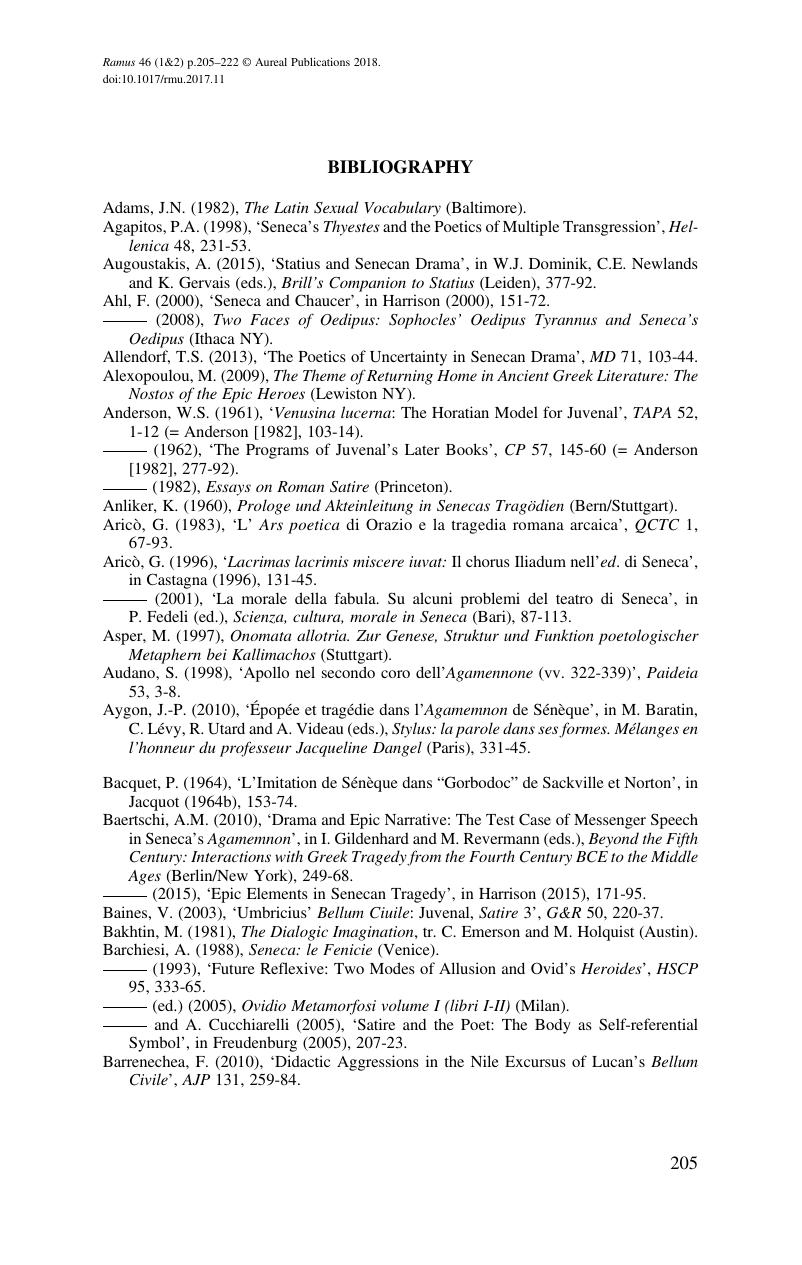Lefèvre, E. (
2002), ‘Die Konzeption der ‘verkehrten Welt’ in Senecas Tragödien’, in L. Castagna and G. Vogt-Spira (eds.), Pervertere: Ästhetik der Verkehrung. Literatur und Kultur neronischer Zeit und ihre Rezeption (München / Leipzig), 105-22 (= Studien zur Originalität der römischen Tragödie [Berlin, 2015], 490-503).
Google Scholar 